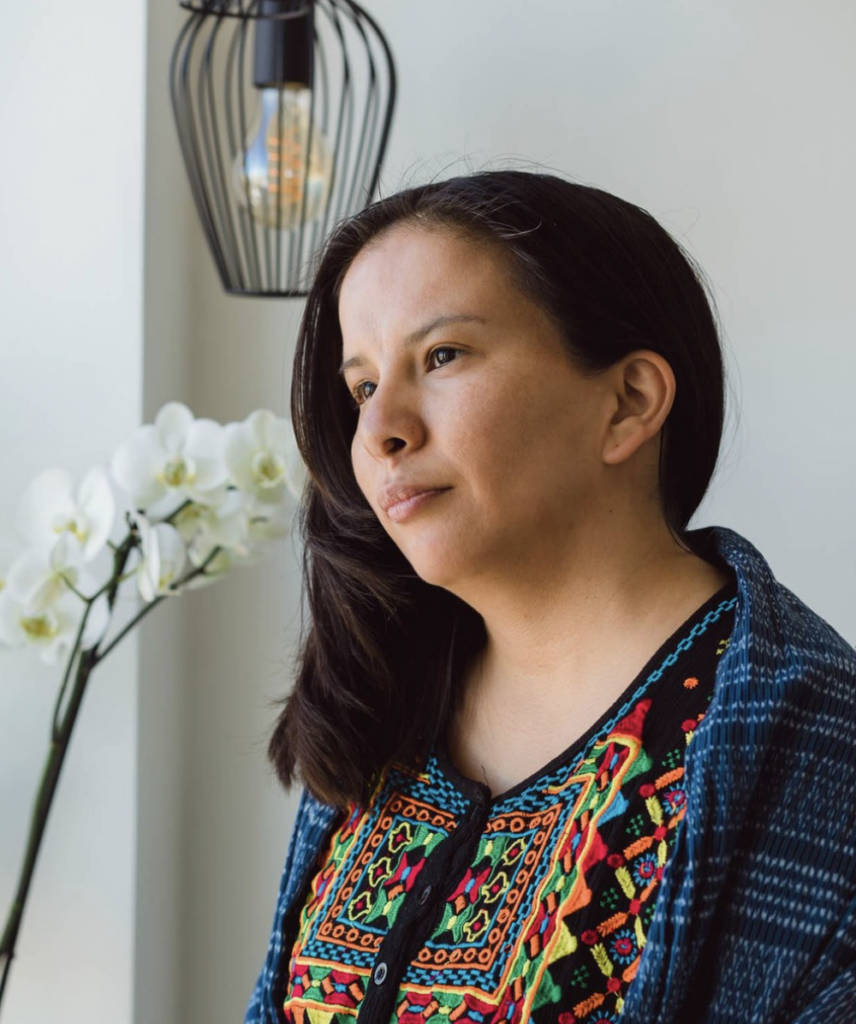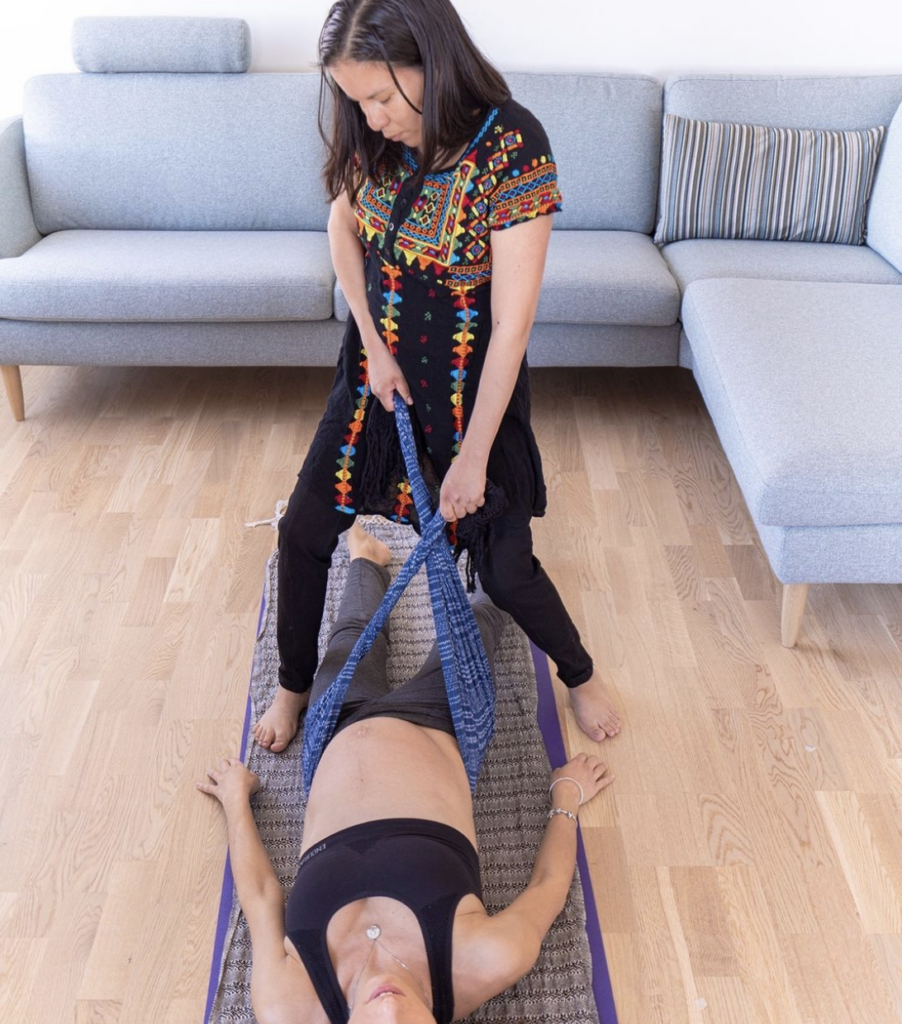Blog
Interview med Lili
Ammevejleder og postpartum doula Lili Hernandez fortæller om, hvordan rebozoen er en del af hendes doula praksis og hendes kulturarv. Lili er en mexicansk traditionel doula, som bor i Danmark. Hun har en naturvidenskabelig uddannelse og arbejder derfor kun med rebozo ud fra evidensbaseret viden og værktøjer. Hun har specialiseret sig som ammevejleder og postpartum/efterfødsels doula. Interviewet er på engelsk.


I am Lili Hernandez, I was born in Mexico and living in Denmark since 2014. I have 2 sons, one that is 4.5 years old who is obsessed with Lego and a one year old who loves dancing. I am married to a Dane, and so I have adopted Denmark as my second country, and I am in love with its history and Nordic culture. Before living in Denmark, I worked as a Research and Development Manager for a chemical company in Mexico, as I have a Natural-sciences education. I am not too fan of environmental chemistry anymore,, but I have a scientific mindset and I always try to use only evidence-based information on my Doula practice.
I became a Doula after the birth of my first son. I was obsessed with all the science related to the birth and breastfeeding process, and it was a way to keep my mind busy while struggling with anxiety before and after my baby was born. When he was around 4 months old, I was already on my way to certifying as Postpartum Doula and Lactation counsellor with Childbirth International. I formalized my business in May 2017 and have been working since then.
How has been your journey as doula and how did you get introduce to the rebozo techniques?
I was not introduced to the rebozo. I am Mexican, and it is part of our roots, is like a second skin for many of us. I was carried in one by mother and grandmothers. I use it as a blanket and as a fashion element since childhood. I wear one on my wedding day.
My doula journey became enriched by my Mexican culture as soon as I decided I wanted to become one. The rebozo was just the natural progression into becoming a true Mexican Doula, as it is elemental for us. I travelled to Mexico in 2018 and took special sessions with traditional Mexican midwifes to learn the art of the Rebozo during childbirth. I have been completing certifications in the past years on many topics, including Mexican herbalism, meditation, maternal health, and more.
When I use the rebozo on my practice?
As a traditional Mexican Doula, the rebozo is an extension of my hands. I use it on every stage and in many different ways. For me, the rebozo is not a “massage support tool” but a part of me as a Doula. I use it not only for massage but also for comfort, healing, physical support and more.
It is always with me, and I use only the hand-made traditional rebozos that represent the region in Mexico where I was born, as a way to honour my heritage.
Why do I recommend a rebozo during pregnancy and beyond?
A rebozo becomes part of your new identity as a mother. It becomes a loving extension of your mother hands. During pregnancy you can learn some comfort massage measures yourself or someone close can do for you. During birth is an element of support and comfort, it literally can support your weight for counter-pressure to handle pain. And after birth it becomes a blanket, a carrier for easy use, a baby wrap. After the baby days, then you can use it as a scarf. So, it is a win-win to invest in one.
What is a postpartum ceremony?
Rituals are part of our nature as humans. Sometimes we need something to commemorate a special time in our life. It is now more common to have, for example, a baby shower to celebrate the pregnancy and receiving gifts for the baby. But nowadays it is not common to celebrate becoming a mother. A Postpartum ceremony is exactly that, a way to welcome the mother into motherhood. These ceremonies are performed in different ways and different cultures all around the world since the beginning of civilization. Unfortunately, it seems they are not fitting our modern life and mothers are expected to go back to normal as soon as possible. This is why I work everyday to spread the word on why it is important to take your time after birth and celebrate becoming a mother.
What is a Mexican Postpartum ceremony and who can have it?
The Mexican postpartum ceremony includes massages, an herbal bath and/or herbal vaginal steaming, Mexican food, belly binding and a special wrapping with rebozos which is known as “La cerrada” (The closure). It represents the closing of the mind and body after being completely opened for birth, and it is normally done after the mother has stopped bleeding (between the first 20 to 40 days after birth). It can be done as many times as necessary for physical and emotional recovery during the first years after birth.
What are the benefits of the postpartum ceremony?
The mothers who I have worked with have mentioned that this closing ceremony makes them feel grounded, relaxed, empowered and strong mentally and physically to navigate their way into motherhood.
The massage is designed to release tension, but also promotes lactation. The herbs using during the bath have healing, disinfectant, and relaxing properties. The food is used for nourishment but also for promoting lactation; and the closing with the rebozo Is done for aligning the bones and ground the body in a unique way. Wrapping the abdomen with the rebozo after the ceremony will keep the womb warm to keep the benefits of the ceremony for longer after finished.
Can this ceremony be done for other purposes?
As the closing ceremony is designed to commemorate and give closure to important life events, it can also be done, with some modifications, to mark those moments. For example, to recover after a miscarriage, when breastfeeding ends or after losing someone or something important, like after a divorce.
It can also be done years after giving birth, if there is still some healing to do or simply as a commemoration as I explained before. It is not recommended for fertility, because it is about closing cycles and fertility is all about making the body receptive for life.
An expert, like me, can do the modifications accordingly. The type of massage, herbs, food and rebozo techniques change according to the situation. Some ceremonies are longer than others. In some cases, even men can benefit from this in case they need some closure. It is not recommended on children, however, with modifications it can be done to help during a trauma recovery process.
Du kan følge Lili Hernandez på Instagram og kontakte hende her:
Vil du gerne dele interviewet med Lili Hernandez med dit netværk?
Del via en af følgende muligheder:


